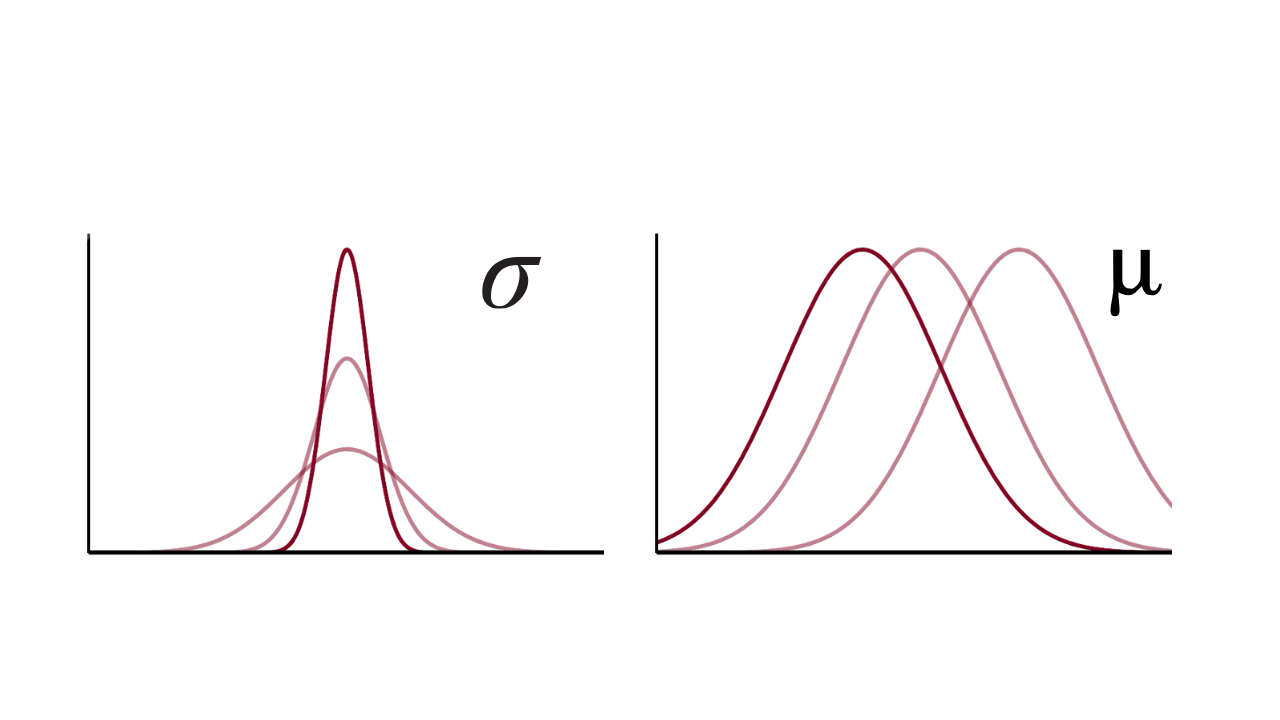Normal Distributions
Explained.


Mean & Standard Deviation
Up to this point, it might seem like all normal distributions are the same, and this is NOT the case. There is a way to tell the difference between these normal distributions like the height of people and the revenue of Cafe Socratica.
It turns out you only need two numbers: one for the peak, and one for the taper. Together, these numbers control the bell shape of any normal distribution.
The first is the mean, written with the Greek letter mu—μ. This is the average, or the center of the distribution. The mean tells us where exactly the peak sits.
The second is the standard deviation, written with the greek letter sigma—𝜎. This tells us how spread out the values are.